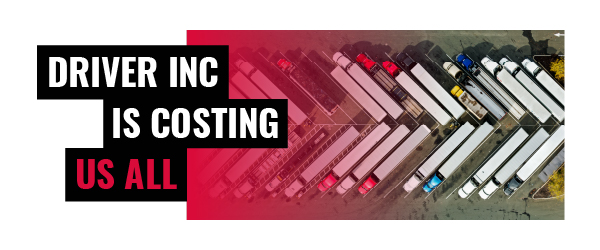A Closer Look at the Federal Investigation into Driver Inc.
The ongoing federal examination of the Driver Inc. business model has finally come into motion after longstanding concerns raised by industry leaders. This investigation targets a practice that many describe as detrimental to the trucking sector and the public at large.
Understanding What Driver Inc. Is All About
Driver Inc. refers to a business model where trucking companies classify drivers as independent contractors when, in many cases, they should be regarded as employees. This misclassification isn’t a mere bureaucratic technicality; it has widespread implications.
The Canadian Trucking Alliance (CTA) has been crystal clear in calling this issue a serious scheme undermining the foundations of tax compliance, labor rights, and safety regulations. Such practices allow companies to cut corners on payroll taxes, wages, insurance, and working conditions to the detriment of the drivers and the integrity of the road transport system.
Why This Investigation Matters
Stephen Laskowski, who leads the CTA, has voiced a fervent warning about the consequences of this model. It’s more than just about economics; it poses risks to public safety and fairness across the industry. The model enables certain companies to sidestep employment laws, shifting billions of dollars away from public coffers — money that should ideally fund essential services such as healthcare and education.
What’s at stake is not just revenue loss but also an uneven playing field. Compliant carriers, those who play by the rules, find themselves squeezed out by competitors taking advantage of illegal classifications. This creates pressure on the whole supply chain and eventually on logistics providers and transportation managers, who must navigate the challenges posed by such uneven competition.
The Standing Committee on Transport’s Role
The Standing Committee on Transport, Infrastructure and Communities (TRAN) jumped into action, scheduling no less than six meetings dedicated to dissecting the Driver Inc. practices. This formal study aims to bring transparency and accountability, with a comprehensive report expected by the year’s end.
High-ranking officials from transport, labor, and revenue departments will testify, highlighting the gravity of this probe. The committee will hear from a variety of witnesses handpicked to shed light on the many facets of this issue.
Impacto na Logística e Transporte de Carga
From a logistics standpoint, misclassifying drivers can ripple through the entire freight ecosystem. Companies relying on such models may offer cheaper transport options initially, but over time this can disrupt fair freight rates and service quality standards.
Moreover, increased risks tied to safety violations represent a potential hazard to the entire supply chain. Whether it’s moving pallets, parcels, or large containers, ensuring driver compliance with safety regulations is crucial for avoiding delays, accidents, or legal setbacks.
| Aspeto | Traditional Employee Model | Driver Inc. Model |
|---|---|---|
| Tax Compliance | Payroll taxes deducted and remitted | Often avoided, causing revenue loss |
| Labor Rights | Workers protected by employment laws | Limited rights, often denied benefits |
| Insurance and Safety | Insurance premiums paid, regulated | Lower insurance, higher safety risk |
| Industry Fairness | Level playing field for carriers | Unfair advantage to non-compliant firms |
The Public and Industry Impact
When companies dodge taxes and responsibilities, the burden shifts on compliant players and taxpayers at large. Public services can suffer, and the strain on road safety measures can escalate. These are factors that reverberate beyond the trucking lanes — touching families, communities, and industries relying on reliable transport.
Looking Ahead: Implications for Cargo Transportation and Logistics Providers
Addressing the Driver Inc. model’s challenges head-on could mean a cleaner, safer, and more equitable logistics sector. Reliable freight moving depends on clear standards and fair competition. The crackdown promises to reduce distortions in haulage pricing and stabilize conditions for carriers and customers alike.
For logistics professionals, understanding these regulatory shifts will be pivotal. Ensuring shipment integrity, compliance, and responsible courier and freight operations goes hand in hand with industry reputation and operational success.
The Power of Transparency and Choice in Transportation
Even though reviews and feedback can shed light on transportation providers, the real test lies in personal experience. Platforms like GetTransport.com empower users to explore diverse cargo transport options globally, balancing affordability with reliability.
With a vast range of services—from office and household moves to transporting bulky freight like vehicles and furniture—GetTransport.com offers transparency, convenience, and competitive pricing in one neat package. This means less headache for planners and movers alike, particularly when navigating an evolving regulatory landscape.
Book your Ride on GetTransport.com
Summary: Why This Matters to You
To sum it all up, the federal study into the Driver Inc. model is a crucial step toward rooting out unfair and unsafe practices in the trucking industry. It aims to restore balance to a sector vital for global and local cargo logistics, impacting freight transport, parcel delivery, and the movement of bulky goods.
The investigation shines a light on the risks of misclassification and underscores how logistics providers must adapt to uphold industry standards. In doing so, it promises stronger enforcement, safer roads, and a fairer marketplace for all.
By choosing services through GetTransport.com, shippers benefit from a platform that champions reliable and cost-effective transport solutions worldwide. This simplifies logistics challenges and ensures your cargo, whether a pallet or a container, is handled with professionalism and transparency.

 Canadian Trucking Alliance Supports Federal Review of Driver Inc. Model">
Canadian Trucking Alliance Supports Federal Review of Driver Inc. Model">